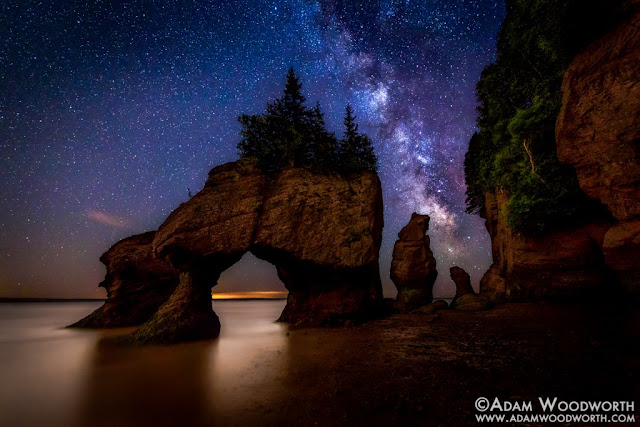 |
| Nubble Lighthouse, York, Maine |
I get lots of questions about how to take night photographs, and there are many questions about camera settings, and I will be writing about that in more detail in the future, but the truth is that the way I approach landscape astrophotography is the same way I approach all other landscape photography. There is a healthy amount of research, planning, technical proficiency and patience involved, but what I want to talk about here is using a strong foreground in your photos. Daytime landscape photography lives and dies by composition, and so does night photography.
Don't focus on just shooting the Milky Way, that's like just shooting the clouds in the sky. It can work beautifully but anyone can take a photo of just the clouds or just the Milky Way. Why not show an interesting location to go with it? A strong foreground is they key to wide angle landscape photography. Use the Milky Way as an element of your composition. Find a location where you can place the Milky Way in the frame in a pleasing way. Consider the angle of the Milky Way and how much of it you want in the frame. You don't always need to capture a large part of the Milky Way. The Milky Way looks the same every night, so you're not really missing much by only using part of it for a composition.
You can practice technical aspects of night photography by photographing simple compositions, such as the stars over tree tops, but once you figure out your preferred settings for minimal star trails with acceptable noise you can then look for framing opportunities that use strong foreground elements.






